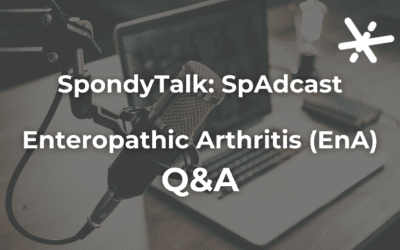Psoriatic arthritis (PsA) can be challenging to manage as it affects both the skin and joints. However, with the right approach, you can lead a fulfilling life. This resource provides practical tips and strategies to help you live well with PsA, empowering you to take charge of your health and well-being. I hope that these resources will aid you in living well with psoriatic arthritis.
Understanding Psoriatic Arthritis
Psoriatic arthritis is an autoimmune condition where the immune system mistakenly attacks healthy cells, causing inflammation in the skin and joints. This can lead to joint pain, stiffness, swelling, back pain and stiffness, and skin symptoms such as psoriasis red, scaly and itchy plaques as well as nail pitting, thickening and lifting of the nail from the underlying nailbed. While PsA can vary from person to person, it’s important to recognize key symptoms and work with your healthcare team to develop a tailored treatment plan. I hope that these resources will aid you in living well with psoriatic arthritis.
Please keep in mind the following points:
- Monitor your symptoms: PsA can flare up at different times. Keep track of your symptoms—both skin and joint-related—so your doctor can adjust your treatment plan as needed. This can be done with the PsA pain management guide published by the CSA.
- Know your options: From medication to lifestyle changes, a variety of treatment options are available to help manage PsA. It’s important to explore what works best for you with your healthcare provider. Download the free PsA Discussion Guide from the CSA website.
- Early intervention is key: Addressing symptoms early on can prevent long-term joint damage.
Staying Active: Motion is Medicine
Exercise plays an essential role in managing PsA. Physical activity not only helps improve joint flexibility and strength, but it can also alleviate stiffness, reduce inflammation, and boost your mood.

Types of exercise beneficial for PsA:
- Low-impact aerobic activities: Walking, cycling, and swimming are great options that improve cardiovascular health without putting too much stress on the joints.
- Strength training: Building muscle helps support your joints, reducing the strain on them. Resistance bands or light weights are ideal for those with PsA.
- Stretching and flexibility exercises: Yoga and gentle stretching can help reduce joint stiffness and improve your range of motion. Click here to learn more about our Yoga program
- Mind-body exercises: Activities like Pilates or tai chi can improve balance, flexibility, and overall joint health.
Practical tips:
- Start slow: If you’re new to exercise or experiencing a flare-up, ease into physical activity gradually. Listen to your body and avoid pushing too hard.
- Consistency over intensity: Regular, gentle movement is more beneficial than high-intensity workouts, especially during joint flare-ups.
- Seek guidance: Consider working with a physical therapist or trainer experienced in arthritis-friendly exercises to create a plan tailored to your abilities and goals.
Managing Skin and Joint Flares
Psoriatic arthritis can involve both joint and skin flares and managing both aspects of the disease can be tricky. Flares can be triggered by stress, illness, or even changes in medication.

Managing Skin Flares:
- Moisturize regularly: Dry, irritated skin can worsen psoriasis symptoms. Use thick, fragrance-free moisturizers to keep your skin hydrated.
- Topical treatments: Your doctor may prescribe creams or ointments containing corticosteroids or other ingredients to reduce inflammation and promote healing of psoriasis plaques.
- Sunlight: Limited sun exposure can help improve psoriasis in some people, but always use sunscreen to protect your skin from damage.
Managing Joint Flares:
- Medication: nonsteroidal anti-inflammatory drugs (NSAIDs), conventional disease-modifying antirheumatic drugs (DMARDs), and targeted (biologic and targeted synthetic DMARDs) are commonly used to manage PsA. Speak to your doctor about which medication is right for you.
- Heat and cold therapy: Applying heat can soothe sore muscles, while cold packs can reduce joint swelling and pain during a flare.
- Rest: Listen to your body and rest when you need to. Don’t feel guilty about taking breaks—your body needs time to recover, especially during flare-ups.
Nutrition and Psoriatic Arthritis
While there is no specific diet for PsA, certain foods can help reduce inflammation and support overall health. Maintaining a balanced diet can help manage both joint and skin symptoms while promoting better energy levels and mood.

Foods that may help:
- Anti-inflammatory foods: Omega-3 fatty acids, found in fish, like salmon and sardines, as well as walnuts and flaxseeds, can reduce inflammation.
- Fruits and vegetables: Brightly colored fruits and vegetables like berries, leafy greens, and carrots are rich in antioxidants, which help fight inflammation.
- Whole grains: Foods like brown rice, quinoa, and oats provide essential fibere and nutrients, supporting gut health and reducing inflammation.
- Lean proteins: Choose lean meats like chicken or plant-based proteins like beans and legumes to maintain muscle mass without increasing inflammation.
Foods to limit:
- Processed foods: Processed snacks and sugary treats can increase inflammation.
- Red meat and high-fat dairy: These can trigger inflammation in some people, so it’s best to consume them in moderation.
- Alcohol: Limit alcohol, as it can exacerbate both skin and joint symptoms.
Practical tips:
- Stay hydrated: Drinking plenty of water can help reduce joint stiffness and keep your skin hydrated.
- Track food triggers: Certain foods may trigger flare-ups, so keep a food diary to identify potential problem areas.
Mental and Emotional Well-Being
Living with PsA can be emotionally challenging, particularly during flare-ups or when dealing with chronic pain. It’s important to take care of your mental health as part of your overall treatment plan.
Tips for maintaining emotional wellness:
- Connect with others: Whether through online communities or local support groups, connecting with others who understand what you’re going through can provide emotional support. If you are interested in attending the CSA Support Group program, click here for more information.
- Practice stress-reducing activities: Stress can trigger PsA flares, so it’s crucial to find ways to manage it. Activities like meditation, deep breathing exercises, or even maintaining a journal can help lower stress levels.
- Seek counseling: If PsA is taking a toll on your emotional health, don’t hesitate to seek professional help from a therapist or counselor.
Building a Support System
Having a strong support system is key to managing PsA. Whether it’s your family, friends, healthcare providers, or patient communities, having people you can rely on will make living with PsA easier.

- Talk openly with loved ones: Explain your condition and how it affects you so they can better understand what you need during flare-ups.
- Lean on your healthcare team: Your rheumatologist, dermatologist, physical therapist, and other specialists are there to support you. Regular check-ins ensure that your treatment plan stays effective.
- Join support groups: The Canadian Spondyloarthritis Association offers support groups and resources tailored to people with PsA, allowing you to connect with others facing similar challenges.
Empowering Yourself
Living well with PsA is about finding what works best for you. Take an active role in your care by staying informed, communicating openly with your healthcare team, and embracing lifestyle changes that support your health. PsA may be part of your life, but with the right tools and strategies, you can still live a full and active life.

Vinod Chandran MBBS, MD, DM, PhD, FRCPC, a rheumatologist, is a clinician-scientist at the Krembil Research Institute and an Associate Professor of Medicine & Laboratory Medicine and Pathobiology at the University of Toronto. He is an expert in psoriatic arthritis and co-directs the Psoriatic Disease Program at the Schroeder Arthritis Institute.
CSA Resources
Podcast – Equitable Access to Treatment and Therapies
Spondyloarthritis is a complex and often...
Podcast – Pain Management Discussion for Spondyloarthritis
This transcript is from a webinar hosted by the...
Podcast – Monica’s Navigation of Spondyloarthritis
Joining CSA in this episode is Monica, who has...
Podcast – Dealing With a New Diagnosis
This excerpt from a CSA webinar, "Recharging...
Podcast – Enteropathic Arthritis Q&A
The Canadian Spondyloarthritis Association (CSA)...
Podcast – Mindful Eating for Spondyloarthritis
Samantha Holmgren, Registered Dietition, hosted...
National PsA Day
On October 19, we join together to recognize...
Psoriatic Arthritis – All You Need to Know (2024)
In this session, Dr. Chandran covered a...
Dietary Interventions in Psoriatic Arthritis (DIPSA) Study
Psoriatic arthritis is an inflammatory arthritis...
External Resources
- Psoriasis Canada: Information and support for people living with psoriasis and psoriatic arthritis.
- Arthritis Research Canada: Current research and resources on arthritis and related conditions.










